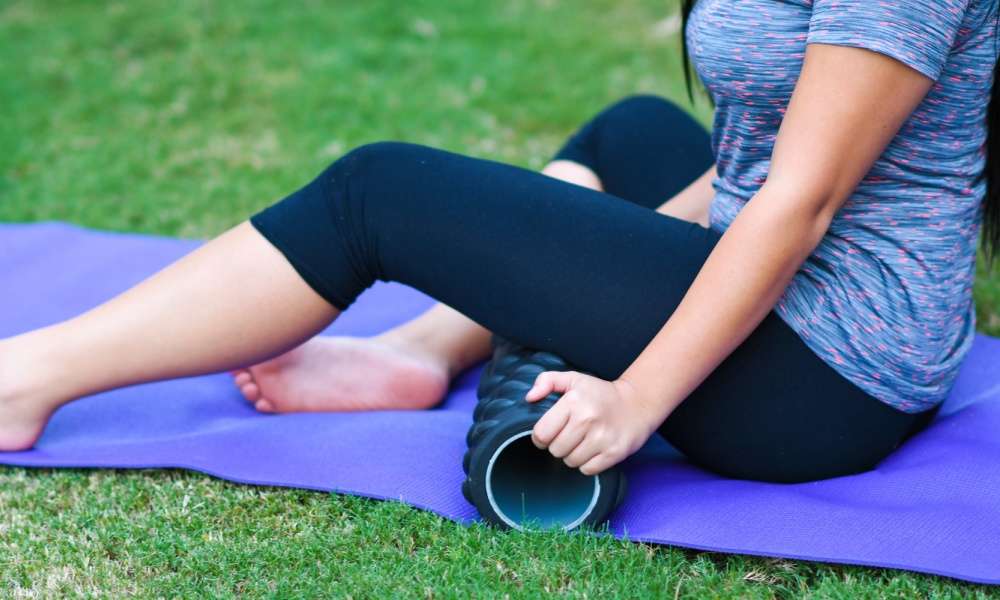Tips for Tight & Sore Muscles
Experiencing tight and sore muscles post workout is very common in a new exercise regimen. This is the time of year many are trying out new exercise programs or hasn’t exercised in while and are getting back into gear. Here are some great ways to reduce tight and sore muscles, increase range of motion and blood flow, and decrease recovery time. These will also help to reduce the risk of injury as well.
-
Self-Myofascial Release
- This can be done on just about every area of the body, read further for 2 different techniques.
- Use a foam roller before and/or after a workout.
- Reduce the risk of potential injury by improving range of motion and limiting faulty movement patterns.
- CLICK HERE to get 3 foam rolling exercises to get started.
- A tennis or racket ball can be used to release trigger points
- Trigger points are knots that build up in muscles caused by overuse, and stress. Continued presence of trigger points can result in chronic pain and abnormal muscle function.
- Put the ball over the trigger point and roll it with consistent pressure until you feel the trigger point release.
- To get areas on the back side of the body use a wall or the floor, then put your body weight against the ball that is on the floor/wall.
-
Functional taping
- There are a few different reasons functional taping is beneficial.
- Nurosensory application improves communication between the Central nervous system (brain) and the muscle. This enhances the feedback that the brain gets from the muscle therefore improving the tissue tone of the muscle as well as decreasing the perception of pain.
- Structural application does what is sounds like. It may be applied to restrict a motion to prevent further injury. Can also assist in stabilizing a joint that may have instability
- Microcirculatory application helps to improve fluid movement to bring more nutrition to an area and to remove buildup of irritants. May help to improve oxygenation the area as well.
- Consult a professional that is CERTIFIED IN FUNCTIONAL TAPING.
- There are a few different reasons functional taping is beneficial.
-
Variety
- A Variety of workouts help balance the muscle and skeletal system.
- Aerobic/Cardio exercise is any exercise that gets the heart rate up. Most think of running, biking, and rowing for this but a moderate intensity circuit training may be an even better option. Circuit training increases the heart rate and includes weight training and a variety of movements. Running, biking and rowing are very repetitive motions that move in only one plane and if not cautious can result in imbalanced muscles
- Weight training can be done with body weight, or use of extra weight with dumbbells or cattlebells. This is very important for the health of the musculoskeletal system. Bones need have that type of stress upon them to improve strength and structure.
- Yoga or any kind of exercise/stretch that works to improve joint mobility and muscle tension. Yoga moves the body in all different planes which is important for balance.
- Meditation/mindfulness is a type of exercise that restores and balances the mind. Use this to reduce stress and become more aware of our body and surroundings. Stress can greatly affect body movement and build up of trigger points, as well as tight and sore muscles.
- A Variety of workouts help balance the muscle and skeletal system.
-
Nutrition
- The body’s only fuel is what we put in it. Fill your body with food and fluids that improves it’s function.
- Drink plenty of fluids
- Eliminate sugary sodas and sports drinks as they elicit spikes in glucose levels leading to a quick high then a crash afterwards.
- Replenish electrolytes with quality mineral water because electrolytes are lost during sweating.
- Meals and Snacks
- Eat meals that are packed with nutrition: for example green leafy vegetables, lean meats, and berries.
- Limit intake of high carbohydrate foods like breads, pasta, and candy.
- Nuts and a fruit or vegetable make for a healthy snack.
- MORE ON NUTRITION HERE.

